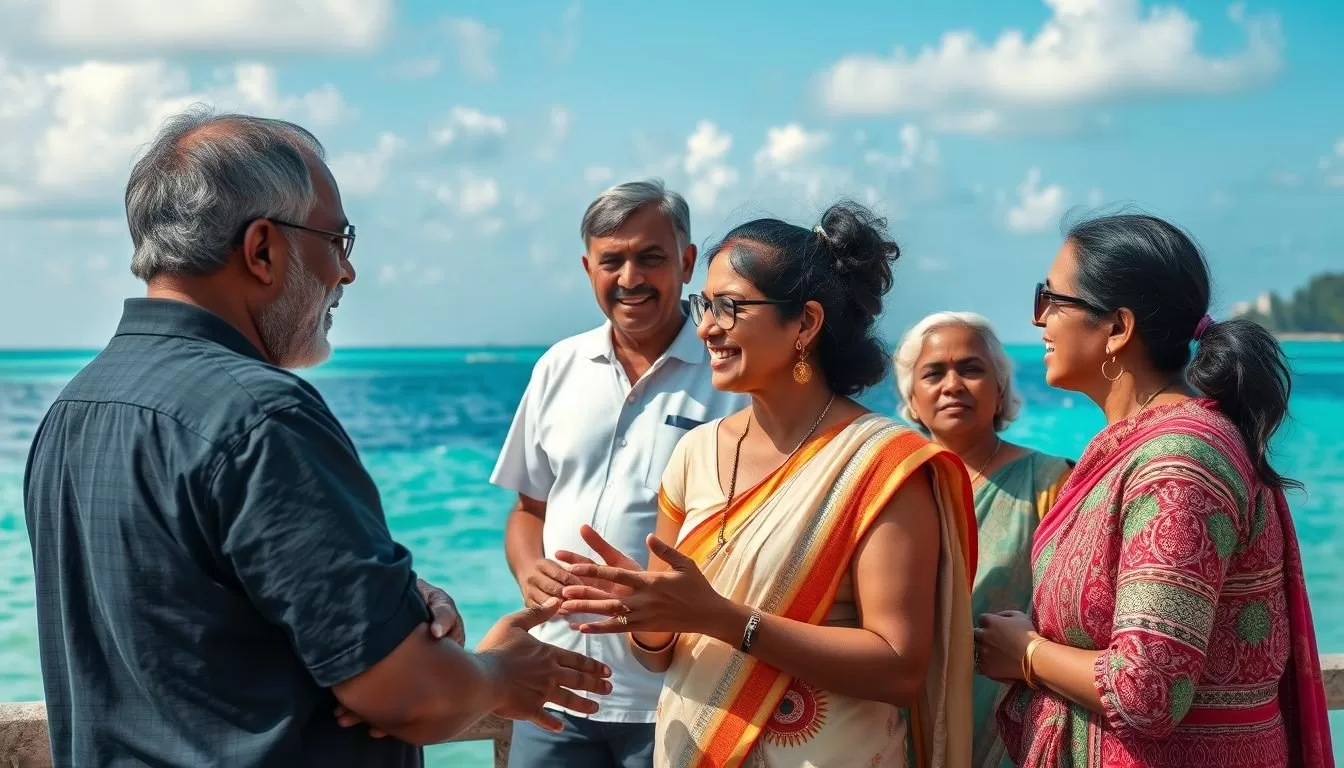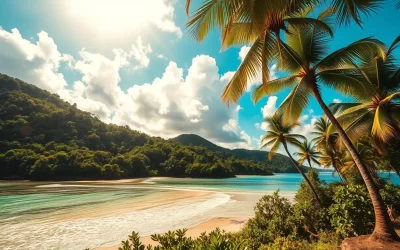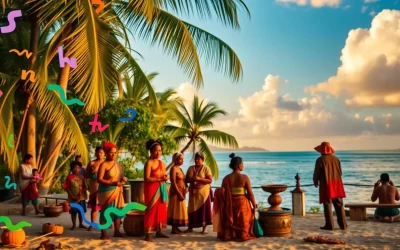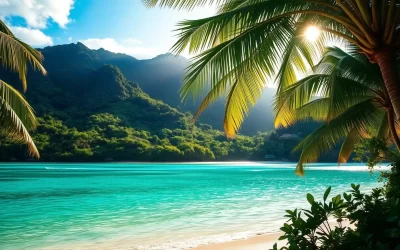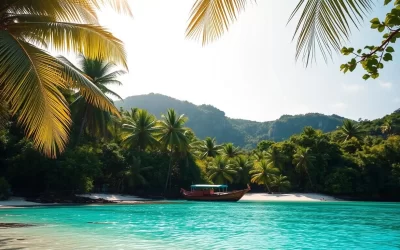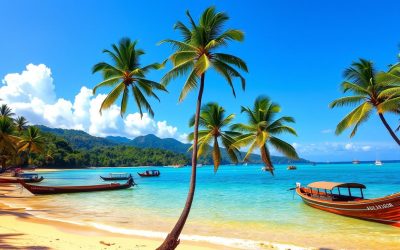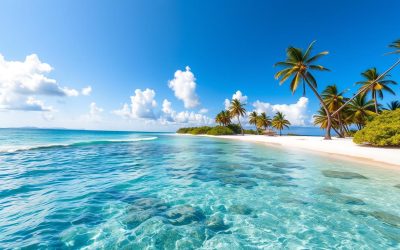You’ll explore a tropical paradise in the Bay of Bengal, home to some of the world’s oldest and rarest languages.
The Andaman & Nicobar Islands represent a unique cultural melting pot where indigenous tribes coexist with settlers from mainland India. This union territory is home to over 400,000 inhabitants, creating a culturally distinct mosaic.
As you delve into the language diversity of these islands, you’ll uncover the historical influences that have shaped the linguistic landscape, from ancient tribal settlements to colonial impacts and modern migration patterns.
Understanding the languages spoken in the Andaman and Nicobar Islands offers insights into the rich cultural heritage and complex identity of this unique region.
The Linguistic Landscape of Andaman and Nicobar Islands
You will discover that the linguistic diversity of the Andaman and Nicobar Islands is a result of their complex geography and rich history. The unique geography of these islands, comprising over 300 Andaman islands and 19 Nicobar islands, has contributed to linguistic isolation and diversity.
Geographical Context and Population
The Andaman and Nicobar Islands are located in the Bay of Bengal, making them a crossroads of cultures with influences from Southeast Asia, the Indian subcontinent, and colonial powers. The population distribution across the islands has created distinct language communities, with some languages confined to single islands or even smaller territories.
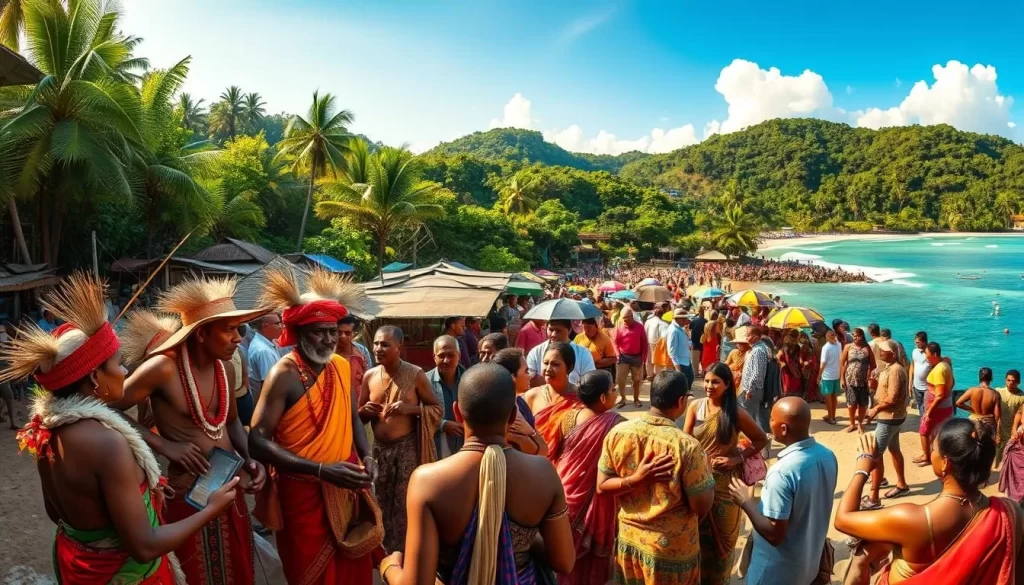
Historical Influences on Language Development
The historical timeline of settlement in the islands reveals fascinating patterns of language development, from ancient indigenous languages to more recent linguistic additions. Indigenous groups like the Nicobarese and Great Andamanese have inhabited the islands for millennia. Colonization, migration, and modernization have introduced languages like Hindi and English, while threatening indigenous languages.
| Island Group | Number of Islands | Notable Indigenous Groups |
|---|---|---|
| Andaman Islands | Over 300 | Great Andamanese |
| Nicobar Islands | 19 | Nicobarese |
Andaman and Nicobar Islands (UT), India: Official and widely spoken languages
You’ll find that the linguistic diversity of the Andaman and Nicobar Islands is a reflection of the various cultures that have settled there. The islands’ unique blend of languages is shaped by the history of mainland Indians who settled in the territory and the indigenous population.
Hindi and English as Administrative Languages
Hindi serves as the primary official language, used in government offices and educational institutions. English is the second official language, crucial for higher education, tourism, and global connectivity. You can observe the importance of these languages in administrative communications and educational curricula.
Bengali, Tamil, Telugu, and Malayalam
The presence of Bengali, Tamil, Telugu, and Malayalam languages is attributed to the migration of people from mainland India. These languages form significant linguistic communities, maintaining their cultural traditions while adapting to island life.
| Language | Significance |
|---|---|
| Hindi | Primary official language, used in government offices and education |
| English | Second official language, important for higher education and tourism |
| Bengali, Tamil, Telugu, Malayalam | Significant linguistic communities, maintaining cultural traditions |
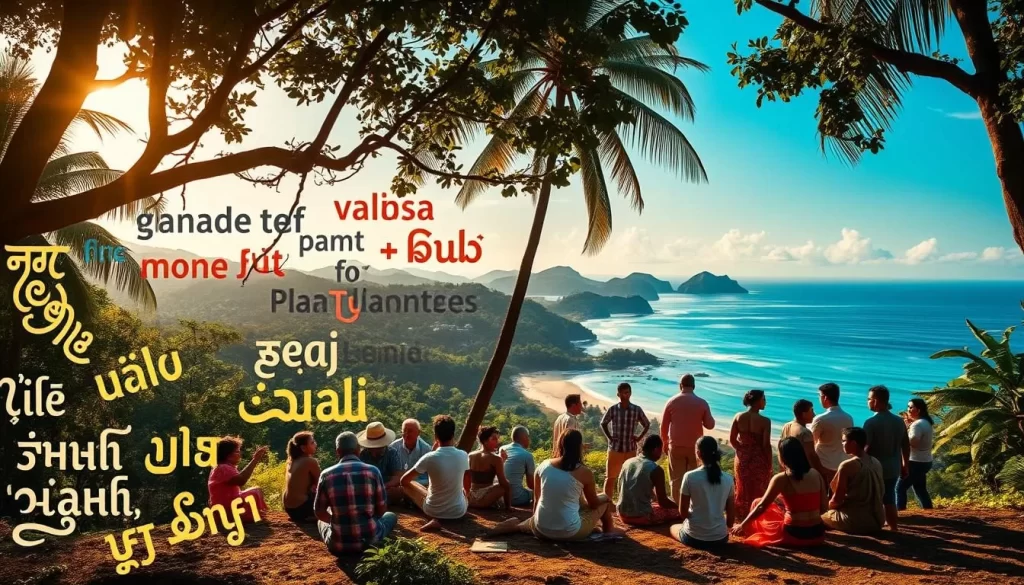
Indigenous Languages of the Andaman Islands
As you delve into the languages of the Andaman Islands, you’ll discover the complex linguistic heritage of this island chain. The Andaman Islands are home to several indigenous languages, each with its unique characteristics and cultural significance.
Great Andamanese Languages
The Great Andamanese communities, such as the Aka-Jeru, Aka-Bo, and Aka-Kora, once spoke distinctive languages. Unfortunately, due to colonization and diseases, these populations were decimated, resulting in the near annihilation of their languages. Today, the Great Andamanese language family is considered critically endangered, with only a handful of speakers remaining.
Ongan Languages: Onge and Jarawa
The Onge and Jarawa people speak Ongan languages, which are characterized by unique phonetic and grammatical structures. These languages represent some of the oldest linguistic lineages in the world, offering insights into possibly 70,000 years of human language development. The Ongan language family is a significant area of study for linguists and anthropologists.
The Mysterious Sentinelese Language
The Sentinelese tribe, inhabiting North Sentinel Island, possesses an unknown language that remains largely undocumented. The tribe’s decision to maintain isolation from the outside world has resulted in a significant lack of understanding of their language. The Sentinelese language is a subject of great interest and speculation among linguists and researchers.
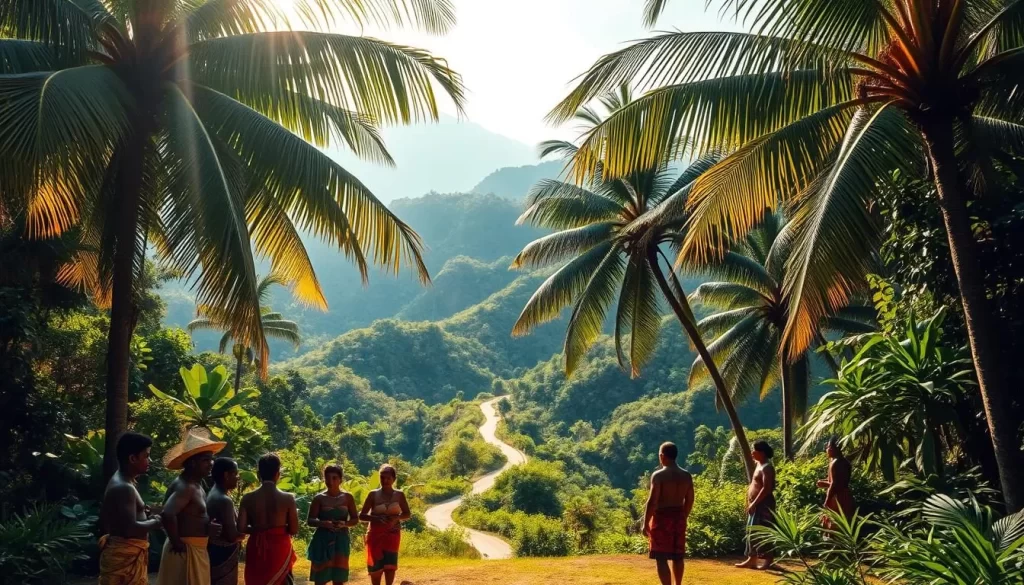
- The Great Andamanese language family, once comprising 10 distinct languages, is now on the brink of extinction.
- Ongan languages, including Onge and Jarawa, provide valuable insights into ancient human language development.
- The unique grammatical structures and phonetic features of these languages set them apart from other language families worldwide.
- The Sentinelese language remains a mystery due to the tribe’s voluntary isolation.
- Understanding these indigenous languages offers a window into early human migration patterns and cultural development.
Indigenous Languages of the Nicobar Islands
As you explore the Nicobar Islands, you’ll discover a rich tapestry of indigenous languages. The Nicobar Islands are home to a unique linguistic heritage, with languages that are distinctly different from those found in the Andaman Islands.
Nicobarese Language and Its Dialects
The Nicobarese language, part of the Austroasiatic language family, is spoken across the Nicobar Islands. It features several dialects, including Car Nicobarese, which is the most widely spoken variant. You’ll learn that the Nicobarese language has tonal qualities and a vocabulary that reflects the islanders’ deep connection to their environment.
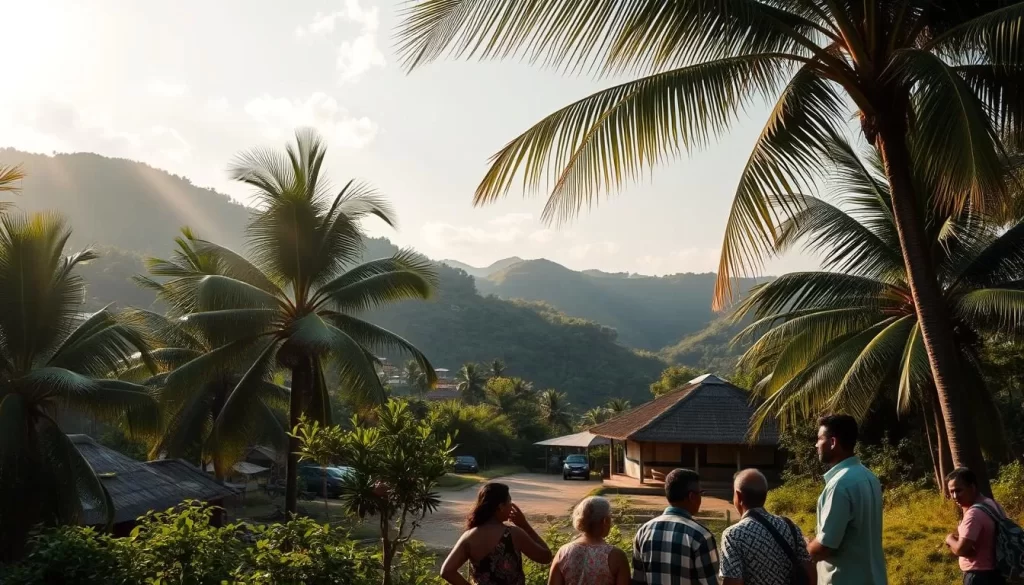
The Shompen Language
The Shompen language, spoken by the semi-nomadic Shompen tribe in Great Nicobar, remains poorly documented. With fewer speakers and minimal documentation, it is a priority area for linguists seeking to preserve the tribal languages of the Andaman and Nicobar Islands. Understanding the Shompen language gives you insight into the distinct cultural identity of the region.
Endangered Status of Tribal Languages
The linguistic diversity of the Andaman and Nicobar Islands is under severe threat as tribal languages struggle to survive. The Andaman and Nicobar languages are under threat from displacement, assimilation, and modernization.
Impact of Modernization and Assimilation
Modernization and assimilation are key factors accelerating the decline of tribal languages. As younger generations adopt mainstream languages like Hindi and English for education and economic opportunities, native languages are falling out of use. This shift not only endangers the languages but also erodes the cultural identities of the people.
UNESCO Classification of Endangered Languages
The UNESCO classification system categorizes the languages based on their level of endangerment. Most tribal languages in the Andaman and Nicobar Islands fall into the most severe categories, with several already extinct and others having fewer than 100 speakers. Understanding this classification helps in grasping the urgency of the situation.
| Language | Status | Speakers |
|---|---|---|
| Great Andamanese | Critically Endangered | <100 |
| Onge | Critically Endangered | <100 |
| Jarawa | Endangered | Several Hundred |
Preserving these languages is crucial not just for maintaining linguistic diversity but also for safeguarding the cultural heritage and history of the Andaman and Nicobar Islands. Efforts to document and revitalize these languages are essential to prevent their loss.
Conservation Efforts and Linguistic Revival
You can explore the various initiatives aimed at preserving the indigenous languages of the Andaman and Nicobar Islands. The government, linguists, and the local community are working together to protect the rich linguistic diversity of this Union Territory.
Government Initiatives for Language Preservation
The government has launched several initiatives, including tribal welfare policies and the establishment of tribal schools, to conserve the linguistic diversity of the Andaman and Nicobar Islands. These efforts are crucial for the preservation of the Great Andamanese languages and other indigenous languages.
Documentation Projects by Linguists and Anthropologists
Linguists and anthropologists have been working tirelessly to document the endangered languages of the Andaman and Nicobar Islands. Their work includes creating dictionaries, grammar guides, and recordings of native speakers, which are essential for language preservation.
Community-Based Language Revitalization Programs
Community-based programs engage tribal elders as teachers and create contexts for younger generations to use their ancestral languages. These initiatives are vital for the revitalization of the indigenous languages.
By supporting these conservation efforts, you can contribute to the preservation of the linguistic diversity of the Andaman and Nicobar Islands for future generations.
Conclusion: The Cultural Significance of Linguistic Diversity
Linguistic diversity in the Andaman and Nicobar Islands is more than just a collection of languages; it’s a gateway to understanding unique worldviews, knowledge systems, and cultural identities. As you explore these languages, you discover that they are living links to the community’s past, holding stories, customs, and identities that are invaluable to humanity’s cultural heritage.
The preservation of these languages is crucial not just for the islands but for the world, as each language contains irreplaceable knowledge about the natural world and human history. By understanding the cultural significance of linguistic diversity in this tropical paradise, you gain a deeper appreciation for the importance of language preservation efforts globally.
In essence, the story of language preservation in the Andaman and Nicobar Islands serves as both a warning about the fragility of cultural diversity and an inspiration for similar efforts worldwide. You’ll come to appreciate the global implications of preserving linguistic diversity and its importance for future generations.
The above is subject to change.
Check back often to TRAVEL.COM for the latest travel tips and deals.
